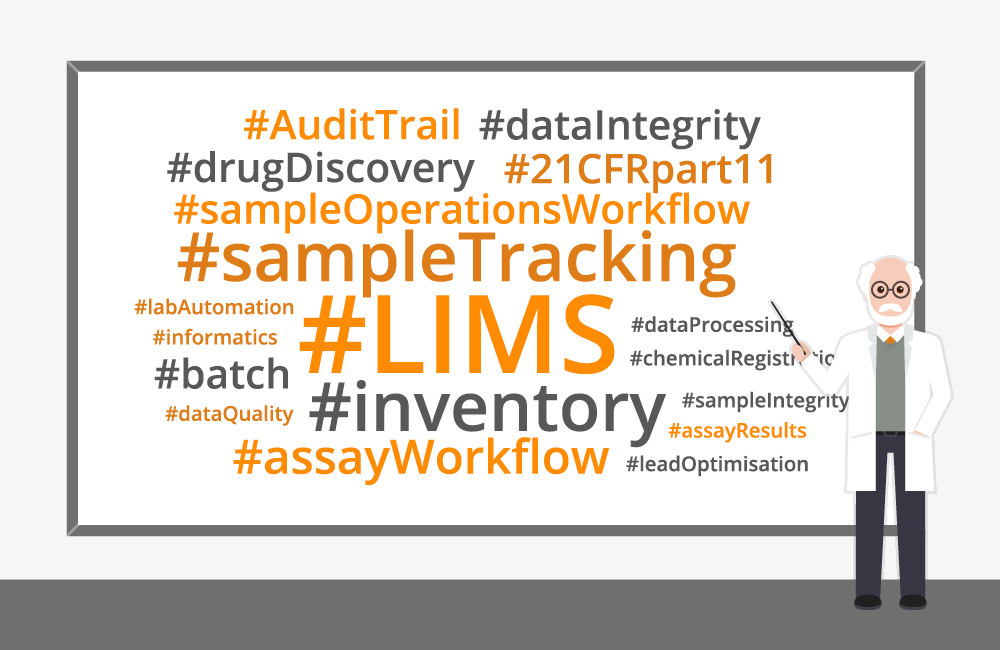There is no question that there is now more information to be managed in a laboratory than ever before.
The idea of, and demands on, Laboratory Information Management System (LIMS) software has evolved over the years from simple sample management, to encompass enterprise resource planning and management of multiple aspects of laboratory informatics.
There is a danger that LIMS now means different things to each user, so that many products described as ‘LIMS’ only cover part of the laboratory information needing to be managed. For drug discovery, Titian suggests that all the following processes fall under the remit of a LIMS, but that each usually requires its own specialist software:
- A record of the assay workflow, showing the experimental process and the batch used
- Registration information containing sample property information
- An inventory tracking system and audit trail
- Sample operations workflow management
- Assay results recording and processing
- Collating this information so that the data is available to users at any stage of the workflow

When drug discovery workflows began to be automated, ‘all in one’ platforms were developed. These managed everything from the creation of samples and their location, certain workflow operations, uploading and storing the results associated with those samples and even some basic analysis of those results.
What should a LIMS be?
This is where it gets a little messy. Some believe that LIMS software has been superseded by the Electronic Lab Notebook (ELN). The purpose of an ELN is to record steps so you can reproduce an experiment, and date intellectual property. The ELN write-up records are essential, legal documents and can’t be replicated on other systems.
In some places ELNs have replaced LIMS for recording data, but they are not best suited for this. Their data is often unstructured, and entered in a mixture of ways including PDFs and spreadsheets. This presents problems for machine learning and artificial intelligence data mining as the data is not consistently accessible, even though it is recorded in an electronic format.
Being unstructured is an argument for giving the ELN the minimum it needs to do – to record the batch used, the experimental process, and barcodes. Don’t expect it to track where your samples are, or information about sample properties. That should be in a registration system or downstream in the inventory management system, where it is structured and searchable.
Most systems branding themselves as LIMS don’t manage automation and sample operation steps. A separate, specialised process is employed to track arraying samples from a store, preparing serial dilutions or weighing out samples and keeping up to date information available that meets regulatory demands.
LIMS and sample management software should provide an audit trail of who performed the task, when they did it, how many freeze/thaw cycles each sample went through, how much sample remains, what the current concentration is, where the sample is now and so on; but also give a view of which sample operations are waiting to be performed.
Having different software systems dedicated to different areas of the laboratory process brings with it an obvious issue: data flow. If each system comes from a different supplier, can you be sure they will communicate? Manual file transfers between systems are a known source of error and a LIMS is supposed to remove such issues.
Where does LIMS fit in the lab information software line up?
Arguably, what laboratories need today is four best of breed systems that work together as a LIMS so that the information required can be expertly managed and passed smoothly to those who need it, anywhere in the drug discovery cycle. These systems would be:
- ELN system to record the assay workflow
- Registration software (such as Chemaxon Registration)
- Sample management software (such as Mosaic SampleBank) to track samples and manage lab automation
- Assay results software (such as Genedata Screener or IDBS ActivityBase)
These can be viewed together as one complete LIMS or as four specialist LIMS, each offering the highest standards of data quality and handling – with the benefit that the systems named above can already be integrated seamlessly, off the shelf.
To offer an analogy: if you were setting up an office, you probably wouldn’t say, “I need a business software system”. You might instead work out that you need a CRM system, word processing software, accounting software, and so on, selecting those that best fit your business.
Perhaps therefore it is no more valid to say “I’m setting up a lab. I need a LIMS”. Instead you should assess what functions need to be covered in your lab and choose software systems that best fit those needs.
